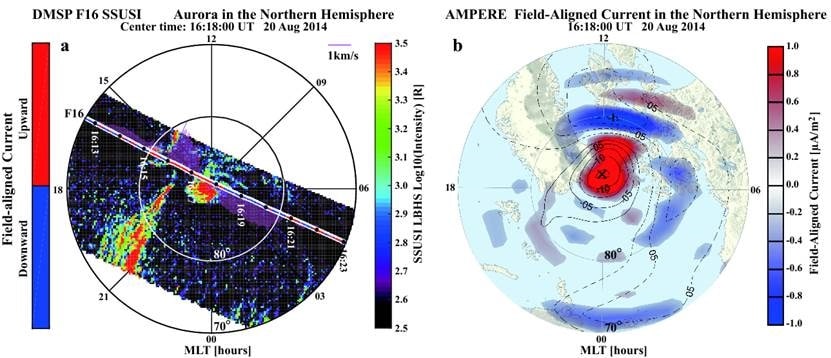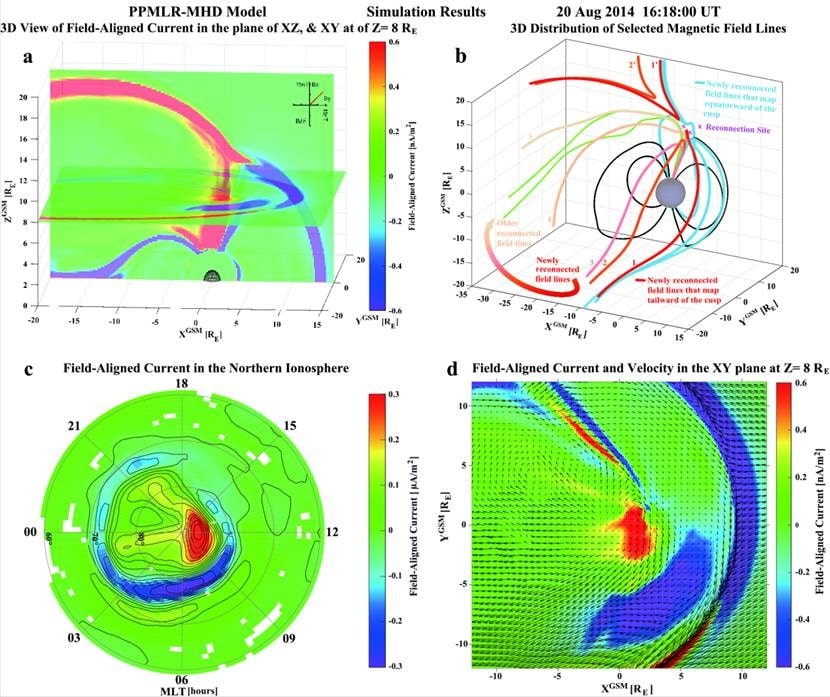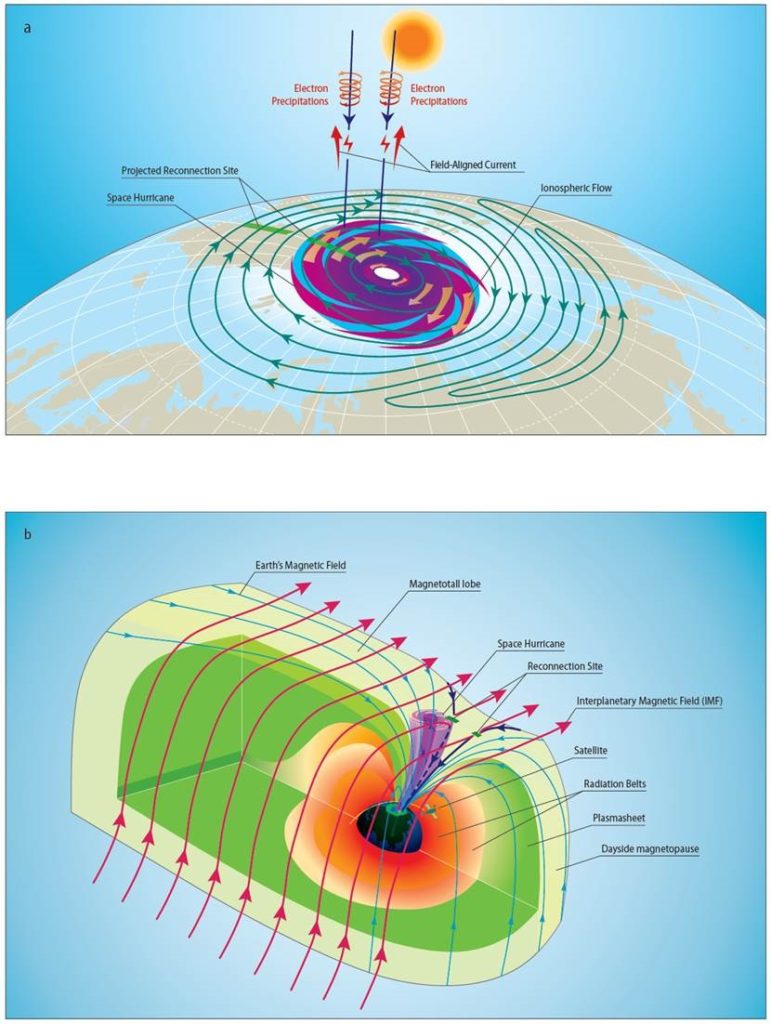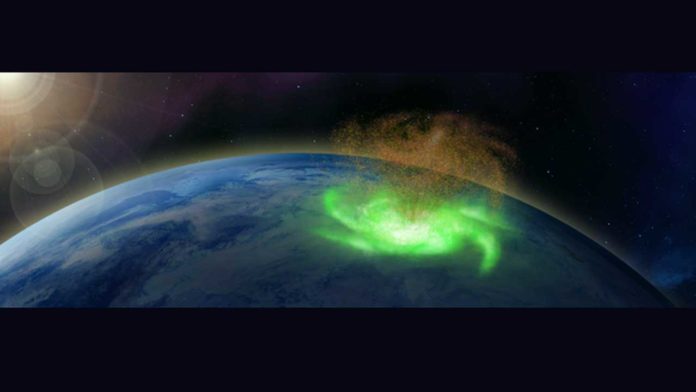Hurricanes are one of nature’s most powerful storms. They produce strong winds, storm surge flooding, and heavy rainfall, leading to inland flooding, tornadoes, and rip currents. They are characterized by a low-pressure center (hurricane eye), strong winds and flow shears, and a spiral arrangement of towering clouds with heavy rains.
Astronomers recently reported a long-lasting space hurricane in the polar ionosphere and magnetosphere during low solar and otherwise low geomagnetic activity. They spotted space hurricanes on Mars, Saturn, and Jupiter, similar to terrestrial hurricanes in the lower atmosphere.
Astronomers wondered if there is a hurricane in Earth’s upper atmosphere. If yes, it must be violent and efficiently transfer solar wind/magnetosphere energy and momentum into the Earth’s ionosphere.

Can we find hurricanes in the upper atmosphere (ionosphere and magnetosphere) in any planet of our heliosphere?
An international team of scientists led by Prof. Zhang Qinghe has answered the question by discovering a space hurricane in the Earth’s polar ionosphere and magnetosphere. Using satellite observations and high-resolution 3D global MHD simulations, scientists found a huge and long-lasting (about 8 hours) cyclone-like auroral spot (diameter over 1000 km) with multiple arms and a trend of anti-clockwise rotation around the north magnetic pole from four DMSP satellites observations.

This cyclone-like auroral spot is also associated with: a spot-like strong upward FAC (with sometimes a FAC hole developed in the center), zero horizontal flow near its center (the hurricane eye) as well as strong flow shears around the edges, ion upflows, enhanced electron temperature (about 1000 K enhancement), a negative-to-positive bipolar magnetic structure (implying a circular magnetic field perturbation), electron inverted-V acceleration to above ten keV, and large and rapid deposition of energy and flux into the polar ionosphere (much stronger precipitating electron energy flux than that during typical quiet and substorm conditions, and comparable to that during superstorms).
As these features are similar to the hurricane in the lower atmosphere, scientists named it as a space hurricane.
The detailed observations and simulation results suggest that the magnetic reconnection will steadily occur at the high latitude lobe region for an extended period of time during a several-hour period of stable northward IMF and very low solar wind density and speed.
After the lobe reconnection, the recently reconnected open field lines are draped by the solar wind to move downward and afterward tailward from the morning side to the afternoon side in the high-latitude lobe region and will slowly get back to their past positions and take an interest in another pattern of magnetic reconnection.

Their development will, in the end, form a tornado cyclone-shaped funnel of FAC with multiple FAC arms and a clockwise circulation of the plasma flow because of the pressing gradient and magnetic stresses on both sides of the funnel for completing the FACs and the flow shear and curve of the circular flow.
Inside the funnel, a corkscrew magnetic field forms with the circular flow and upward FACs, which accelerate electrons that precipitate into the ionosphere and create the auroral spot with multiple arms. This means that the space hurricane opens a rapid energy transfer channel from space to the ionosphere and thermosphere.
Scientists noted, “Our study suggests that even during an otherwise extremely quiet geomagnetic condition, there are still existing local intense geomagnetic disturbance and energy depositions which is comparable to that during superstorms. This will update our understanding of the solar wind-magnetosphere-ionosphere coupling process under tranquil geomagnetic conditions.”
Journal Reference:
- Zhang, QH., Zhang, YL., Wang, C. et al. A space hurricane over the Earth’s polar ionosphere. Nat Commun 12, 1207 (2021). DOI: 10.1038/s41467-021-21459-y
